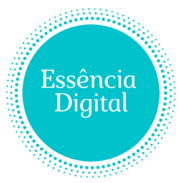Why Networking Matters for Remote Freelancers
For many freelancers, the word “networking” conjures images of stuffy conference halls, awkward handshakes, and a stack of business cards destined for a desk drawer. It feels like an activity exclusively for extroverts in a physical space. But for the modern remote freelancer, this perception is not only outdated—it’s dangerous to your career growth. Networking is the lifeblood of a sustainable freelance business, and learning to do it effectively from your home office is a non-negotiable skill.
When you work remotely, you lose the built-in community of a traditional office. There are no chance encounters by the coffee machine, no spontaneous team lunches, and no after-work events to forge bonds. This isolation can be a significant career obstacle. Proactive, deliberate virtual networking is the antidote. When you cultivate meaningful connections online, you plug into a global ecosystem of opportunities that can dramatically accelerate your career. This network becomes your source for new clients, strategic collaborations, high-quality referrals, invaluable peer support, continuous learning, and even genuine friendships. This guide will walk you through the strategies to build your virtual network authentically and effectively, transforming your remote work setup from a place of isolation into a launchpad for success.
The Unique Challenges and Opportunities of Home-Based Networking
Transitioning from in-person to online networking requires a shift in mindset and strategy. It comes with a distinct set of hurdles and advantages.
Challenges:
- The Lack of Serendipity: You can’t accidentally bump into a future client or collaborator while grabbing lunch. Every interaction must be intentional.
- The “Cold Outreach” Hurdle: Sending a message to a stranger can feel intimidating, and it’s easy to get discouraged when messages go unanswered.
- Difficulty Conveying Personality: It’s harder to build immediate rapport and establish credibility through text alone. Nuance, humor, and personality can be lost in translation without the benefit of face-to-face interaction.
Opportunities:
- Geography is Irrelevant: You are no longer limited to your local city. Your network can span continents, connecting you with professionals, clients, and ideas from around the world.
- Flexibility for All Personalities: Asynchronous communication (email, DMs) is a superpower for introverts or busy freelancers. You can craft thoughtful responses on your own schedule, without the pressure of an on-the-spot conversation.
- Scalable and Trackable: Digital networking is inherently organized. You can easily keep detailed notes on your connections, schedule follow-ups, and maintain a rich history of your conversations, making nurturing relationships far more manageable.
Building a Strong Online Presence: Your Digital Handshake
Before you send your first message, you need to ensure your online presence is professional, polished, and inviting. Your profiles are your digital storefront.
- Optimize Your Professional Profiles: Your LinkedIn profile, personal website, and bios on freelance platforms (like Upwork or Toptal) are your cornerstones. Use a clear, high-quality, and friendly headshot. Your LinkedIn headline should be more than just your job title; it should state the value you provide (e.g., “Freelance Copywriter Helping SaaS Brands Boost Conversions”).
- Showcase Your Expertise: Don’t just list your skills; demonstrate them. Your website portfolio should feature case studies that detail the problem, your solution, and the results. On LinkedIn, consistently post updates, share insightful articles about your industry, and publish your own short-form content.
- Reveal Your Human Side: People connect with people, not just with resumes. Comment thoughtfully on other people’s posts. Celebrate their successes. Occasionally sharing a behind-the-scenes look at your workspace or a non-work-related interest makes you more relatable and memorable.
Leveraging Social Media and Niche Forums
Your ideal clients and collaborators are already gathered online. You just need to find them and engage in a meaningful way.
- Join Relevant Groups and Communities: Look for active, well-moderated LinkedIn and Facebook groups related to your industry, specialization, or ideal client base. Beyond social media, explore niche communities on platforms like Slack, Discord, or Reddit. These are often invaluable sources of support and insider knowledge.
- Participate, Don’t Just Promote: The golden rule of community engagement is to give more than you take. Follow the 80/20 principle: spend 80% of your time providing value (answering questions, offering advice, sharing resources) and only 20% on self-promotion. Position yourself as a helpful expert, and opportunities will naturally flow your way.
- Engage with Virtual Events and Webinars: Many organizations now host free or low-cost digital conferences and webinars. These are fantastic networking opportunities. Be an active participant in the chat, ask insightful questions, and connect with speakers and other attendees on LinkedIn afterward with a personalized message referencing the event.
The Art of the Effective “Cold” Message
“Cold” doesn’t have to mean “impersonal.” A well-crafted message that shows genuine interest and respect can open powerful doors.
- Do Your Research: Before reaching out, spend five minutes looking at their LinkedIn profile, company website, or recent posts. Find a point of connection.
- Personalize Every Single Message: Generic, copy-pasted messages are immediately deleted. Your opening line should prove you’ve done your homework. Mention a mutual connection, a recent article they wrote, a company achievement, or a shared interest.
- Be Clear and Concise: Structure your message simply:
- The Hook: Start with your personalized point of connection.
- The Introduction: Briefly say who you are and the value you provide.
- The “Why”: Explain why you are reaching out to them specifically.
- The Ask: Make a clear, low-effort request. Instead of “Can I pick your brain?”, try “Would you be open to a brief 15-minute virtual coffee to discuss [specific topic]?”
- Follow Up, But Don’t Pester: If you don’t get a response, it’s okay to send one polite follow-up message about a week later. After that, move on.
Nurturing Your Network for the Long Term
The real value of networking lies in nurturing relationships over time. This transforms a list of contacts into a powerful community of allies.
- Keep Track of Your Connections: Use a simple spreadsheet or a free CRM tool to keep notes on the people you meet. Record how you met, what you discussed, and any personal details they shared (like an upcoming vacation or a project they were excited about).
- Practice “Light-Touch” Engagement: You don’t need a reason to stay in touch. A simple “like” or thoughtful comment on their LinkedIn post keeps you on their radar. Sharing an article you think they’d find interesting is a powerful way to show you’re thinking of them.
- Embrace Reciprocity: The most powerful networking is a two-way street. Be generous. Refer business to others in your network, recommend them for opportunities, and offer your help and advice freely. Give before you ever think to ask.
Conclusion: Grow Your Career, One Connection at a Time
Networking from home is not a one-time task to be checked off a list; it is an ongoing, career-sustaining practice. It’s about planting seeds, nurturing relationships, and building a community that will support you through the ups and downs of your freelance journey. Your next great client, your next business partner, or your next game-changing idea could be just one thoughtful message away. Start today. Send one personalized connection request. Post one insightful comment. Invest in your network as deliberately as you invest in your skills, and watch your freelance career flourish.

